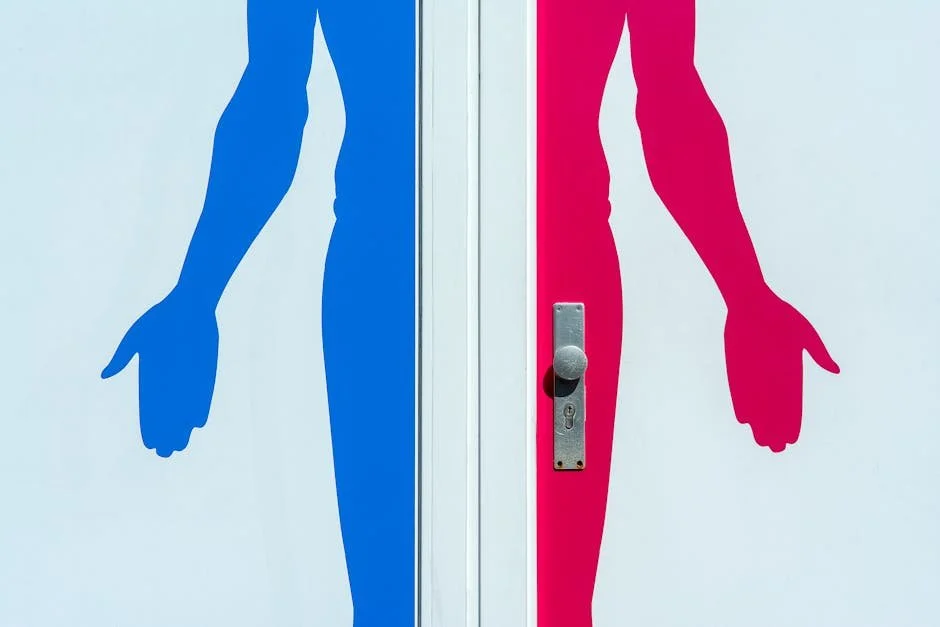Introduction to Cleanroom Doors: Essential for Controlled Environments
Cleanroom doors aren't just any doors. They play a critical role in maintaining the purity and controlled conditions of cleanrooms used in industries like pharmaceuticals, biotech, and electronics. These doors are designed to seal environments, keeping out contaminants like dust, airborne microbes, and chemical vapors. What makes them special? They are constructed with specific materials that resist corrosion, are easy to clean, and limit the accumulation of particles. Furthermore, these doors have tight seals to prevent air leakage, crucial for maintaining the pressure differentials that keep cleanrooms uncontaminated. Whether swinging, sliding, or roll-up, the design of cleanroom doors ensures minimal interference with the cleanroom's controlled conditions while providing efficient access. Remember, the right door can make all the difference in preserving the integrity of a cleanroom environment.
Understanding the Importance of Cleanroom Doors in Your Facility
Cleanroom doors are more than just entryways; they're critical components in maintaining the integrity of your controlled environment. They ensure contaminants stay out, allowing your operations to run smoothly. It's key to understand that these aren't ordinary doors. They are designed to seal off the environment tightly, preventing dust, microbes, and other particles from entering or exiting the cleanroom. This is crucial in industries like pharmaceuticals, biotech, and electronics manufacturing, where even the smallest particle can cause significant product contamination. Additionally, these doors often feature automation for minimal contact, reducing the risk of human-borne contamination. Simply put, selecting the right cleanroom door can greatly impact your facility's operational efficiency and product quality. So, consider them a crucial investment in your facility’s cleanliness and compliance standards.
Key Features of High-Quality Cleanroom Doors
High-quality cleanroom doors are essential for maintaining the purity and integrity of your controlled environment. Look for these key features when choosing cleanroom doors for your facility. First, they should be made of materials that are easy to clean and can resist corrosion. Stainless steel or anodized aluminum are top choices. Next, consider the seal; it must be tight to prevent air leaks, maintaining the required pressure levels and preventing contamination. An automatic closing feature is also crucial to minimize the amount of time the door remains open, reducing the risk of pollutants entering the cleanroom. Durability is another important factor; your doors should withstand frequent use without degradation in performance. Lastly, opt for doors with windows made of safety glass for visibility without sacrificing cleanliness or safety. These features ensure your cleanroom operates efficiently, remains uncontaminated, and complies with industry standards.
Material Selection for Optimal Cleanroom Door Performance
When you're on the hunt for the right cleanroom doors, the material they're made of is critical. You need something that resists contamination and is easy to clean. Most cleanroom doors are made of stainless steel or aluminum because these materials check those boxes. Stainless steel is the top dog for durability and resistance against corrosion, bacteria, and chemicals. It's a bit pricier, but it's worth it for areas that need strict cleanliness. Aluminum, on the other hand, is lighter and less expensive. It's great for areas that don't face harsh chemicals or extreme conditions. Remember, your choice impacts not only how clean your room stays but also how much you'll spend on maintenance down the line. Choose wisely based on your cleanroom's needs.
Air Tightness and Seal Integrity in Cleanroom Doors
When talking about cleanroom doors, air tightness and seal integrity are non-negotiable. These features are key to maintaining the controlled environment your cleanroom demands. Why so crucial, you ask? Because any air leaks can introduce contaminants, ruining the purity of your cleanroom and potentially spoiling the work or products inside. Think of your cleanroom door as a guardian. It stands between the pristine inner world and the untidy outside. To perform its duty, the door must seal perfectly. This means no gaps, no leaks – just a solid barrier that unwanted particles can't breach. Remember, even the smallest compromise in your door's seal integrity can lead to big troubles in maintaining the needed cleanliness levels. So, when choosing a door, prioritize one that promises excellence in air tightness and robust sealing. It’s your first defense against contamination.
Easy-to-Clean Surfaces: A Must for Cleanroom Doors
In cleanrooms, where keeping contamination levels low is crucial, having doors that are easy to clean is non-negotiable. Why? Because doors are high-touch surfaces, making them prime spots for the accumulation of particles and microbes. Now, when we talk about easy-to-clean surfaces, we're looking at materials that don't give germs a place to hide. Smooth, non-porous surfaces are your best bet. Think stainless steel or fiberglass. These materials are resistant to corrosion, chemicals, and can withstand repeated cleaning without deteriorating. And here's a pro tip: Avoid doors with complex designs or hard-to-reach areas. The simpler the door's design, the less time and effort it takes to clean it, ensuring your cleanroom maintains its integrity. This feature doesn't just add to cleanliness but also streamlines maintenance, keeping operations smooth and efficient.
Durability and Resistance: Key Factors for Long-term Use
When picking doors for your cleanroom, think durability and resistance. This isn't about choosing any door; it's about finding the one that'll handle what you throw at it and stand the test of time. You want a door that brushes off impacts, resists chemicals, and doesn't panic at a bit of moisture. Why? Because in places like labs or manufacturing sites, accidents happen. Spills, bumps, you name it. A door that's easy to wipe down and won't corrode or warp keeps your cleanroom, well, clean, and safe.
Now, let's talk materials. You're looking at options like steel, which is tough as nails and great at laughing off chemical spills. Then there's fiberglass, equally rugged but with a bonus feature—it's a bit more forgiving if you're trying to keep stuff like corrosive chemicals or extreme temperatures at bay.
Bottom line, picking a heavy-duty, resistant door might cost you more upfront, but it's an investment. You're buying peace of mind knowing that your cleanroom's defenses won't falter, keeping your work and workers safe. That's a win in any book.
Advanced Locking Systems and Security Features
When choosing cleanroom doors, don't skimp on advanced locking systems and security features. Good locks keep your cleanroom secure from unauthorized access. Imagine having a space so secure, only certain people can get in, much like a secret club but for science or manufacturing. You want that level of control and protection. Most modern cleanroom doors come with electronic locks that can integrate with card readers, keypads, or biometric systems. These aren't just fancy gadgets; they're your first line of defense. Also, consider doors with alarms or access control systems that can track who enters and exits. This tech isn't just cool; it's essential for maintaining strict cleanroom standards and protecting your work. Your peace of mind comes from knowing that what's inside stays clean and confidential.
Compliance with Industry Standards and Certifications
When picking cleanroom doors, it's essential to make sure they meet specific industry standards and certifications. This isn't just about following rules; it’s about ensuring safety, reliability, and quality in your facility. Each industry might have its own set of standards, but generally, look for doors that are ISO certified. ISO standards are all about quality and are internationally recognized. They ensure that products are safe, reliable, and of good quality. For pharmaceuticals, food, and healthcare sectors, check if the doors comply with the FDA or other relevant authorities. These certifications prove that the doors have been rigorously tested and are up to the mark for cleanroom applications. In simple terms, going for doors that meet these standards is like choosing a path that's already been checked for safety and quality. So, always check the door’s certification before making a decision.
Conclusion: Choosing the Right Cleanroom Doors for Your Facility
Selecting the ideal cleanroom doors is vital for maintaining the integrity of your controlled environment. It's not just about picking a door; it's about ensuring your facility stays sterile, operational, and compliant with industry standards. Consider the door's material, durability, sealing capability, and how well it supports your cleanroom's specific requirements. Whether it's for pharmaceuticals, electronics, or aerospace, the right doors can significantly impact productivity and safety. Don't rush this decision. Take your time, weigh the options, and choose doors that offer the best balance of quality, functionality, and price for your facility. Remember, the right doors are an investment in your cleanroom's future success.

